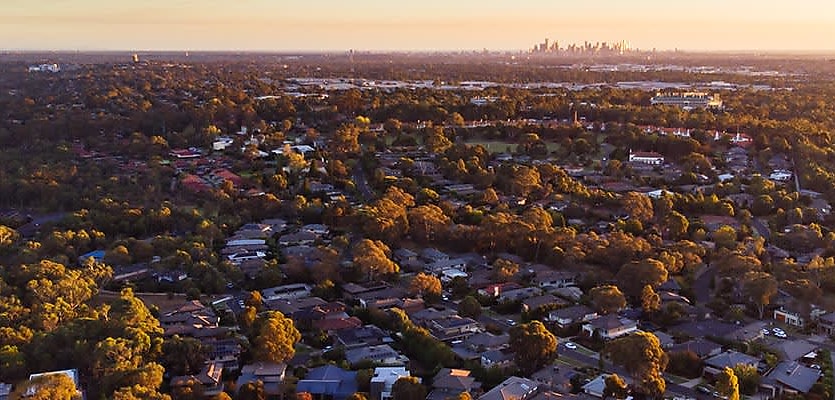Half of Australia’s capital cities saw values decline in the months leading up to July, according to CoreLogic’s Monthly Housing Chart Pack.
This negative change is part of a larger cooling market that has been induced by a myriad of reasons, including higher inflation and interest rates, resulting in the combined value of Australian residential real estate falling from $9.95 trillion in June to $9.8 trillion at July’s conclusion.
Nationally, values decreased by 2 per cent in the three months preceding July, led by value drops of 4.7 per cent and 3.2 per cent in Sydney and Melbourne, respectively. Values also descended in Hobart (1.3 per cent) and Canberra (0.9 per cent).
Adelaide reported the biggest increases, with values up 3.6 per cent throughout the quarter, followed by Darwin (1.9 per cent), Perth (1.2 per cent) and Brisbane (0.1 per cent).
An outlook of national regional markets depicts falling values in regional NSW (0.8 per cent) and Victoria (0.5 per cent), whereas prices went the opposite direction in regional Queensland, up 0.1 per cent, Western Australia (0.9 per cent), Tasmania (0.4 per cent), Northern Territory (2.8 per cent) and South Australia (4.2 per cent).
All the combined capitals reported a positive change in dwelling values in the 12 months to July 2022, with growth ranging from 0.3 per cent in Melbourne to 24.1 per cent in Adelaide.
Similar activity was recorded in the national regional markets, with each state experiencing value growth during this 12-month period, with increases ranging from 6.4 per cent in regional Northern Territory through to 22.5 per cent in regional South Australia.
CoreLogic also found that sales volumes were beginning to ease from their recent peaks, with the research body estimating there were a “reasonably steady” 581,138 sales in the year leading up to July 2022.
However, when compared to the figures recorded during the same three-month period in 2021, sales estimates are down 16 per cent. The biggest drop in volume has occurred in Sydney, with the NSW capital recording a 13.5 per cent decline in the 12 months to July 2022.
In addition to the harbour city, sales volumes have fallen in Hobart and the national capital Canberra, while they have risen in every other capital city.
Regionally, only NSW, Victoria and Tasmania recorded a sales volume decrease in this period.
As sales figures do fall, the average days on market across the country has risen to just over one month (32 days).
Sellers in Darwin can expect their properties to take nearly 50 days to sell (49.5 days) — the most of any national capital. Conversely, in Brisbane, it is taking just over three weeks on average to achieve a sale, at just 23 days.
As a result of inflated sales times, stock levels have risen 4.2 per cent in the capital cities, while regional areas have reported a 9.3 per cent fall in total listings, coinciding with a national decline of 1.6 per cent for July.







You are not authorised to post comments.
Comments will undergo moderation before they get published.